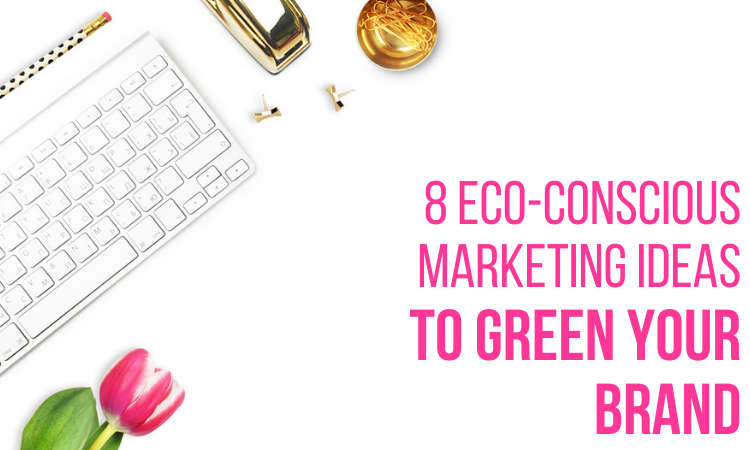Compared to any generation that came before them, millennials are more obsessed than ever with being green. It’s their raison d’etre.
So now many brands that target the age group are having to rethink their approach to branding. Yes – you still want to make your products or services appear enticing. But you also need to talk about how you’re saving the planet for certain doom as well.
This is a contributed post. Please refer to my disclosure for more information.

Green Marketing: What Is It?
Green marketing is the concept of selling goods and services by pointing to their green credentials (or those of your brand).
Tesla provides the best example of green marketing in history. The company talks endlessly about reducing CO2 emissions while, at the same time, providing a desirable product that consumers want.
Ideally, you want to talk about how your brand deals with the usual regular negative aspects of consuming products. So you could focus on things like minimizing the use of plastic or reducing the number of miles your trucks travel on the way to market. You get the picture. Green marketing is all about making your company look more sustainable. You need to prove that you’re supporting nature, not exploiting it.
So what counts as green marketing? What can your brand try?
Deploy New Sustainable Production Methods
Producing goods and services is a costly and energy-intensive process. Furthermore, it also leads to unwanted byproducts and waste that could potentially harm the environment – at least when done traditionally.
Now, though, many brands are changing their production processes to protect the environment. And it’s working.
Take outdoor clothing brand Patagonia, for instance. It’s investing in sustainable ways to make products while also being honest with customers that it’s not entirely green. Some of its clothing is made from fossil fuels.
However, that doesn’t mean that the brand isn’t moving in the right direction. It’s keen to point out to customers that purchasing from it funnels more research dollars to creating sustainable fabrics.
Reduce Plastic Packaging
Many companies are also making moves to reduce their plastic packaging usage.
Starbucks is probably the best example. All the way back in 2005, it was talking about eliminating plastic straws. And since things came to a head in 2019, it is well on its way to getting rid of all plastic straws.
That particular company isn’t quite in the clear yet – it still generates a lot of plastic waste. But it did prove a boon for the brand. Now millennials are more in love with it than ever – all thanks to a small, token gesture.
Plant Trees
Here’s another thing that your brand might want to talk about publicly: the fact that it is supporting forestry services in planting trees.
Planting trees is a vital form of carbon sequestration. When carbon dioxide levels in the atmosphere rise, the number of trees naturally increases. With more “food” in the air, the total volume of plant life around the world is expanding.
And that’s an opportunity for you. You can hop on that bandwagon and accelerate this process, creating a carbon sink for the whole Earth. This way, the planet can become a greener place.
Marketing the fact that you plant trees can develop into a highly effective strategy. It shows that you’re prepared to undo any damage that you might be doing. And it sets you aside from other brands that might only be paying lip service to the environment.
Publish Sustainable Stories
Stories are among the most powerful marketing techniques available for connecting with audiences. Once you capture a person’s interest, they can’t help but fall in love with your brand. Stories draw them in and create a much more intimate connection.
Brands have been publishing sustainable stories for a long time now. For instance, clothing manufacturer Timberland uses stories to discuss the origins of its products. That’s because it knows that discussing the green aspects of its clothing makes it much more likely that customers will choose it over other brands.
As a company, Timberland has been very public about the green element of its business. It believes in using new materials and has set a target for 100 percent organic and renewable materials in its products in the future.
Talk About Energy Reduction
Another tactic you can use is to talk about energy production – a great option for brands whose products are intrinsically damaging to the environment.
IKEA, for instance, talks at length about the processes it uses to reduce its reliance on fossil fuels. Nearly 90 percent of the companies’ buildings have either solar panels, wind turbines, or both, generating a substantial chunk of the energy the retailer uses.
IKEA is also famous for its People & Planet Positive strategy. It works with manufacturers to develop eco-friendly practices, helping to avoid the need for consumers to choose between sustainability and style. The Swedish homeware says that they can have it both ways.
Highlight That You Don’t Do Animal Testing
This particular green marketing idea doesn’t apply to every industry. But if you are in the cosmetics sector, it can work a treat.
People don’t want to think that the products they consume are the result of harm to animals. So labelling them vegan or saying that you’re “against animal testing” can help a great deal. Most consumers are also against animal testing, even if they eat meat.
Perhaps the best-known example of this type of marketing is the Body Shop. The retailer got its start by pointing out that it didn’t harm animals. Then, soon after, the public learned that most brands are still engaged in animal testing and made the switch. In the 1990s, the Body Shop managed to steal business from much larger rivals, even though it was only a startup.
It’s not the only brand to try this tactic, but it did implement it well.
There are, of course, numerous green marketing ideas companies use. CocaCola, for instance, launched its PlantBottle campaign to help conserve water worldwide. But the one you choose has to fit your brand. Otherwise, it’ll look contrived or bolted-on as a form of “greenwashing.”



